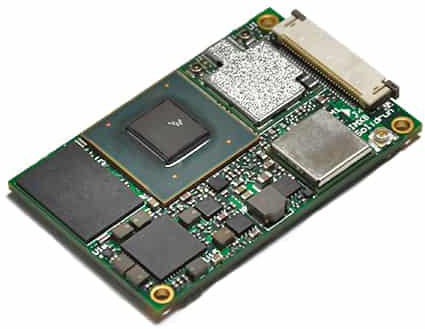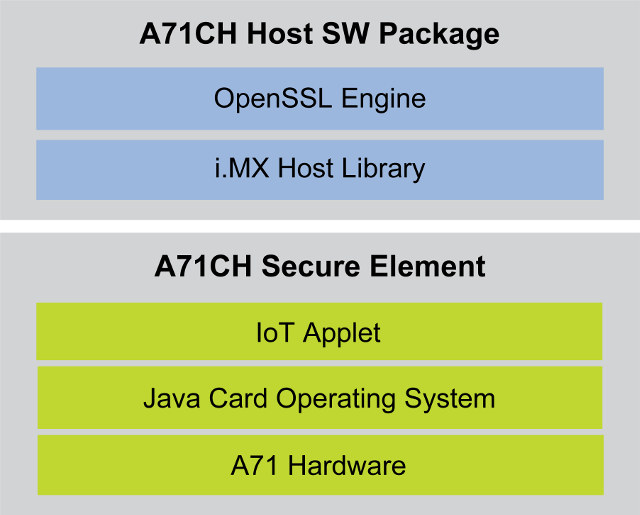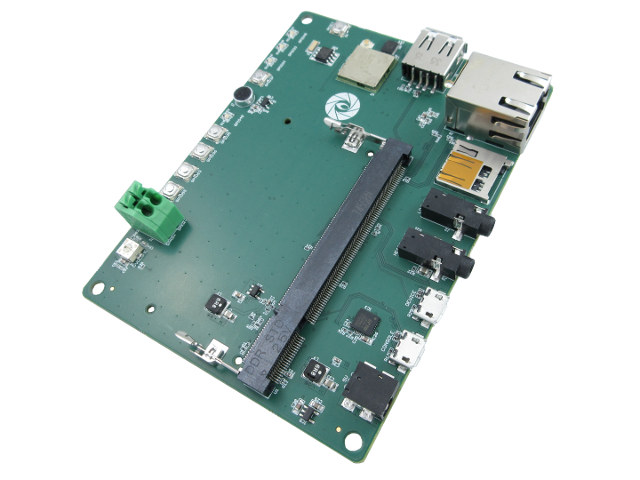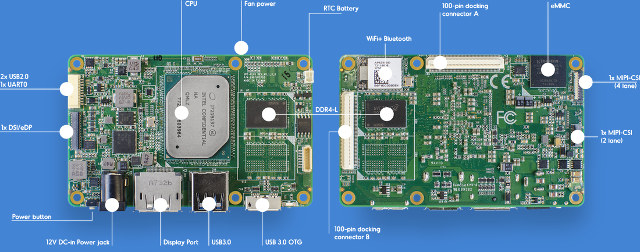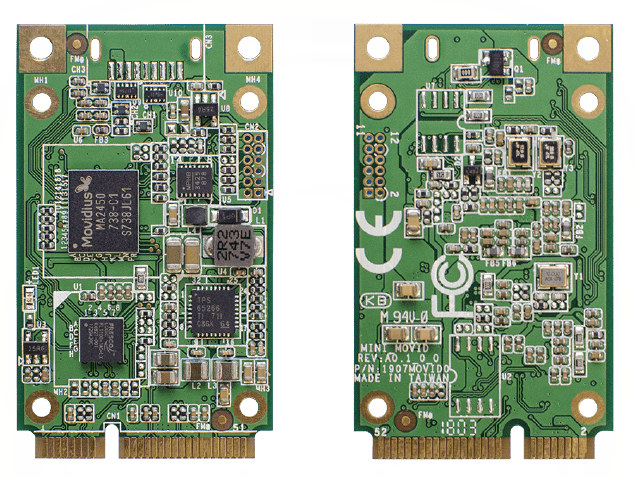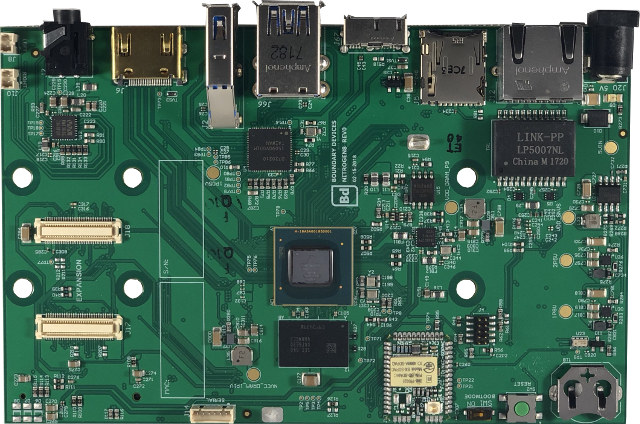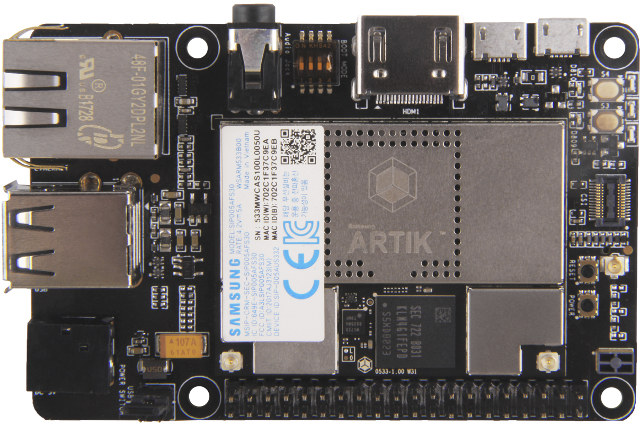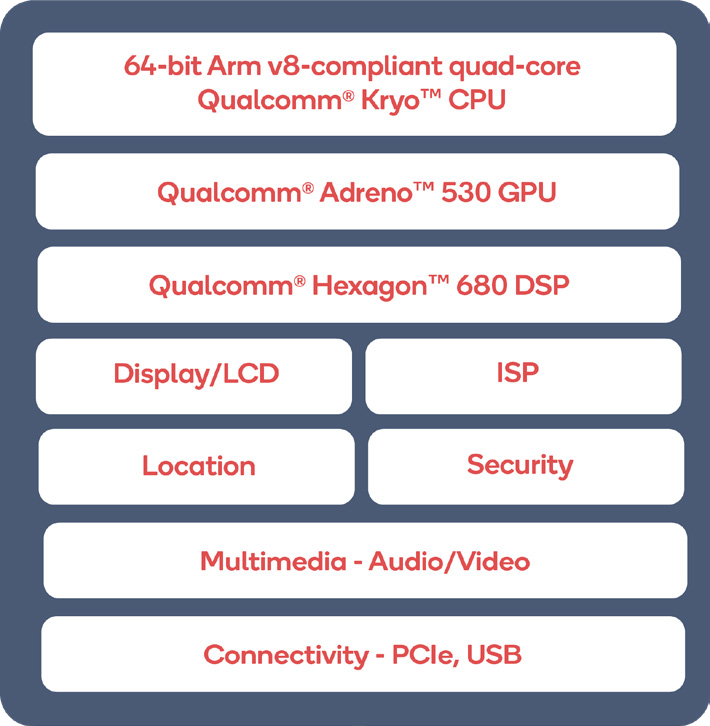Solidrun has several products based on NXP i.MX6 processors including i.MX6 SoMs, Cubox-i mini PCs, and HummingBoard Edge development board, which were launched between 2013 and 2015, and still sold to this day. But the company has now launched refreshes for all those products based on the new i.MX 8M 64-bit Arm processors with i.MX 8M industrial systems-on-module, Cubox Pulse mini PC, and HummingBoard Pulse SBC. Solidrun i.MX 8M SoM Three different modules – which differ only by their processor and max memory capacity – are available with the following specifications: SoC SOM i.MX8 Dual – NXP i.MX 8M Dual core ARM A53 @ 1.3 GHz (up to 1.5 GHz), Arm Cortex-M4, and Vivante GC7000 Lite GPU SOM i.MX8 Quad Lite – NXP i.MX 8M QuadLite quad core ARM A53 @ 1.3 GHz (up to 1.5 GHz), Arm Cortex-M4, and Vivante GC7000 Lite GPU SOM i.MX8 Quad – NXP i.MX […]
NXP Unveils A71CH Secure Element Chip for Secure Peer-to-Peer or Cloud Connections
The industry clearly has an issue at hand with the security of the Internet of Things, and the problem is complex as some devices are easily accessible due to bad configuration (e.g. default username/password), while others may have security flaws at various levels of the software stack from the low level bootloaders to the operating systems, and applications. Nowadays, devices also need to be upgradeable, and communicate with the cloud, and that introduces other attack vectors in case malignant firmware is installed instead, or a man-in-the-middle attack occurs. While some people may claim security can be achieved by software only, we are seeing security evolving towards combined software and hardware solutions, for example with Arm Trustzone built into SoCs, but some companies are also introducing Secure Element chip, which Samsung has already done and integrated into their Artik modules to secure data from the hardware to the cloud. NXP has […]
Gumstix Chatterbox is a Customizable, AVS-Ready Development Platform based on Toradex Colibri i.MX7 SoM
There are several official Amazon Voice Service (AVS) development kits, and we’ve already covered a few of them with the likes of Allwinner 3-Mic Far Field AVS Development Kit or Intel Speech Enabling Developer Kit, but you can also design your own board conformant to Amazon’s Alexa Voice Service functional design guide. That’s exactly what Gumstix has done with Chatterbox carrier board for Toradex Colibri i.MX7 system-on-module powered by NXP i.MX7 Arm Cortex A7 processor. Designed in Geppeto, the board includes a 2.5-Watt speaker driver, an on-board microphone, and Line IN and headphone jacks, as well as WiFi, Bluetooth and Ethernet for connectivity. Gumstix Chatterbox specifications: Colibri iMX7 SO-DIMM socket Storage – microSD card slot Audio – On-board microphone; 2.5W speaker driver; Line-in & headphone jacks Connectivity – Gigabit Ethernet, 802.11 b/g/n WiFi & Bluetooth 4.1 LE (TI WiLink8 WL1831) with u.FL antenna connector USB – 1x micro USB […]
UP Core Plus Board To Support AI Plus FPGA and AI Net Ethernet Expansion Boards
We’ve just written about UP AI Core mPCIe card part of the new AI Edge family from UP Board, but other members will soon be released including UP Core Plus board, that builds upon UP Core Cherry Trail board launched last year, with a choice of Intel Atom x5/x7, and Celeron/Pentium Apollo Lake processors. The form factor is different, but just like the first UP Core board, the Core Plus board supports expansion boards via docking connectors such as the Net Plus Ethernet expansion, and the AI Plus expansion board with Intel Cyclone 10 GX FPGA. UP Core Plus specifications: SoC (one or the other) Intel Atom x5-E3940 (2M Cache, up to 2.00 GHz) Intel Atom x7-E3950 (2M Cache, up to 2.00 GHz) Intel Celeron N3350 (2M Cache, up to 2.50 GHz) Intel Pentium N4200 (2M Cache, up to 2.50 GHz) System Memory – 2GB, 4GB or 8GB on-board DDR4L-2400 […]
$70 UP AI Core mini PCIe Card Features Intel Movidius Myriad 2, Supports Tensorflow and Caffe Frameworks
AAEON’s Up Board has given us some affordable Intel development boards over the years with products such as the Cherry Trail based UP Board, or Apollo Lake powered UP Squared board among others, that are competitively priced against equivalent Arm development boards. The company has now launched a new UP AI Edge family, which will include hardware based on Intel Altera FPGA or Intel Movidius VPU (Vision Processing Unit). Their first product is based on the latter, more exactly Movidius 2 2450 VPU, and instead of being a standalone board, UP AI Core is a mini PCIe card that can fit into any 64-bit Intel board or computer. UP AI Core card specifications: SoC – Intel Movidius Myriad 2 2450 VPU System Memory – 512MB DDR SDRAM Mini PCIe edge connector Dimensions – 51 x 30 mm Host computer/board requirements System Memory – 1GB RAM or more Storage – 4GB […]
Nitrogen8M Single Board Computer with NXP i.MX 8MQuad Processor Comes with Up to 4GB RAM, 128 GB Storage
Boundary Devices Nitrogen6X was one of the first boards based on Freescale i.MX 6 processor when it launched in 2012, and even I never owned their board personally, I liked the fact the company published frequent updates about software development on their blog. With NXP i.MX 8 processors now officially available, the company introduced an update to their SBC with Nitrogen8X powered by NXP i.MX 8MQ quad-core processor, with 2 to 4 GB LPDDR4 RAM, 8 to 128 GB flash, a certified wireless module for WiFi and Bluetooth, and more. The form factor has changed dramatically, however. Nitrogen8M specifications: SoC – NXP i.MX 8MQuad ((Dual, QuadLite available on request) with four Cortex A53 core @ up to 1.5 GHz, one Cortex-M4F real-time core, and a Vivante GC7000Lite 2D/3D GPU System Memory – 2 or 4GB LPDDR4 (2GB standard) Storage – 16MB QSPI NOR Flash, 8GB eMMC flash (expandable to 128 […]
Eagleye 530s Board Features Samsung Artik 530s IoT Module, Leverages Raspberry Pi Form Factor
Samsung Artik 530 is a module designed for the Internet of Things based on a quad core Arm Cortex A9 processor, and supporting Ethernet, dual band WiFi, Bluetooth 4.2, and 802.15.4/Zigbee/Thread connectivity, as well as exposing display and camera interfaces, and of course various I/Os. The module was launched about one year ago with a developer kit that cost $189 and up, but Samsung has now worked with Seeed Studio to launch a cheaper developer board – called Eagleye – based on the secure version of the module (Artik 530s) and mostly following Raspberry Pi form factor in order to take advantage of its hardware ecosystem. Eagleye 530s board specifications: SoC – Unnamed quad core Arm Cortex A9 processor @ 1.2GHz with 3D graphics accelerator System Memory – 1GB DDR3 Storage – 4GB eMMC flash, SD card slot Connectivity 802.11a/b/g/n dual band SISO (2.4G/5G) Bluetooth 4.2(BLE+Classic) Zigbee/Thread 802.15.4 Gigabit Ethernet […]
Qualcomm Snapdragon 820E Launched for the Embedded Market, DragonBoard 820c Board Selling for $199
Qualcomm Snapdragon processors are mainly used in smartphones manufactured in high volume, and in the past if you contacted the company to use their processor for your custom project with a target yearly production of a few thousands pieces, they’d just ignore you. This started to change in late 2016 with the launch of Snapdragon 410E and 600E processors based on mobile version of Snapdragon 410 and 600 processors minus the modem, but instead targeting the embedded space and the Internet of Things, which anybody could purchase easily through Arrow Electronics, and offering a 10-year life cycle. Those are good if you are satisfied with entry-level or mid-range processor, but the company has now announced the launch of Snapdragon 820E for customers requiring better performance for their application. Snapdragon 820E specifications appears to be moslty the same as Snapdragon 820 except for the lack of X12 cellular modem: CPU – 4x Qualcomm […]


